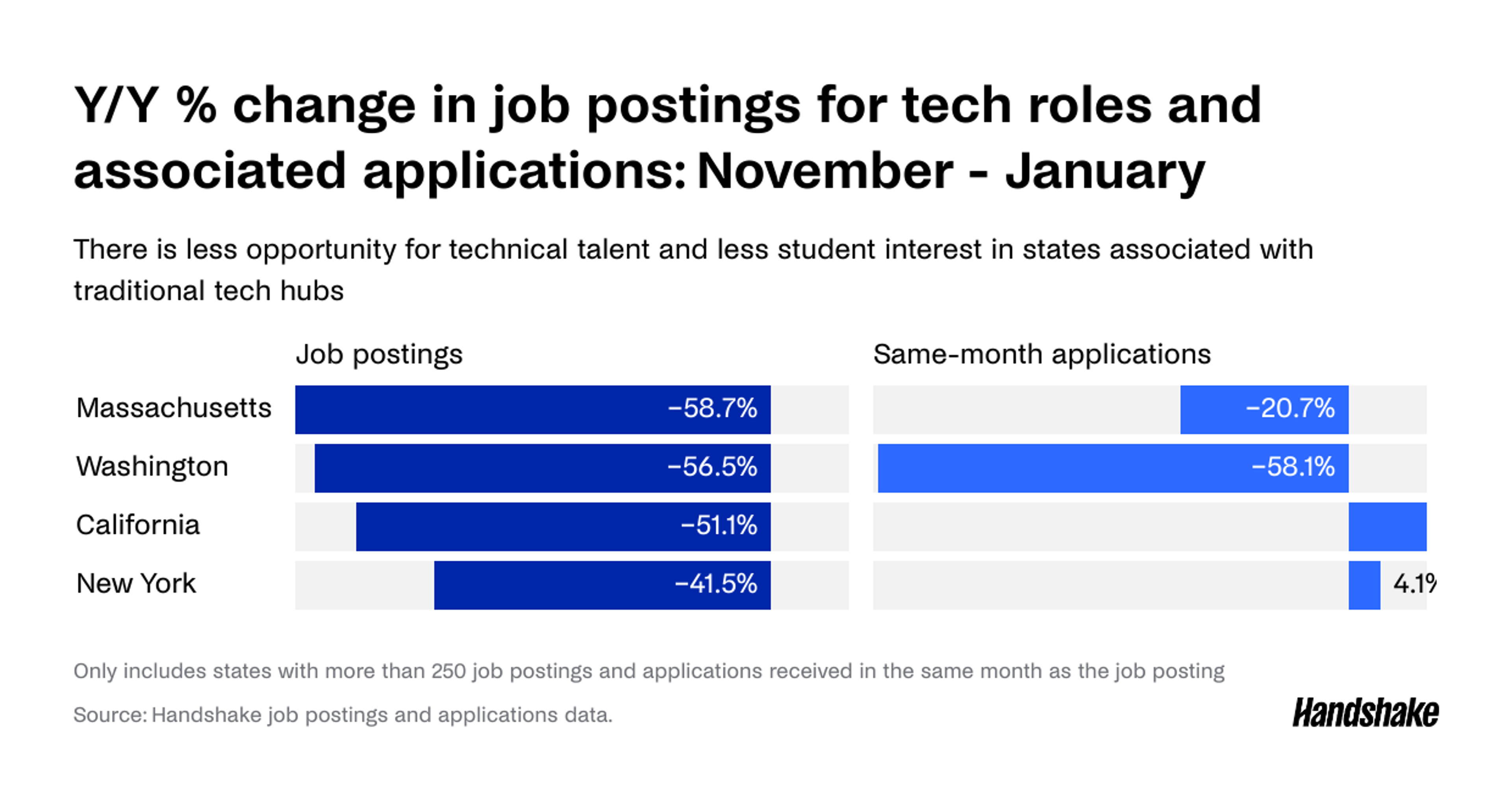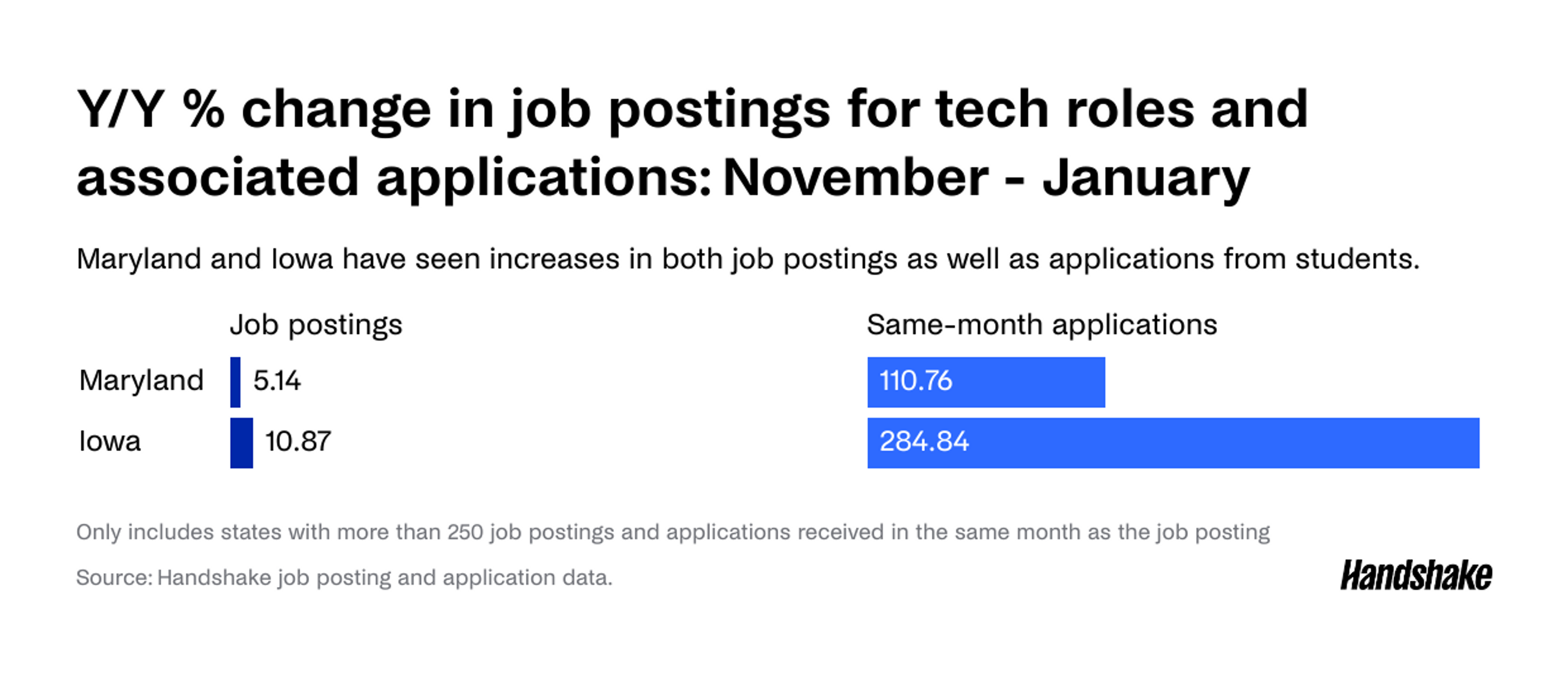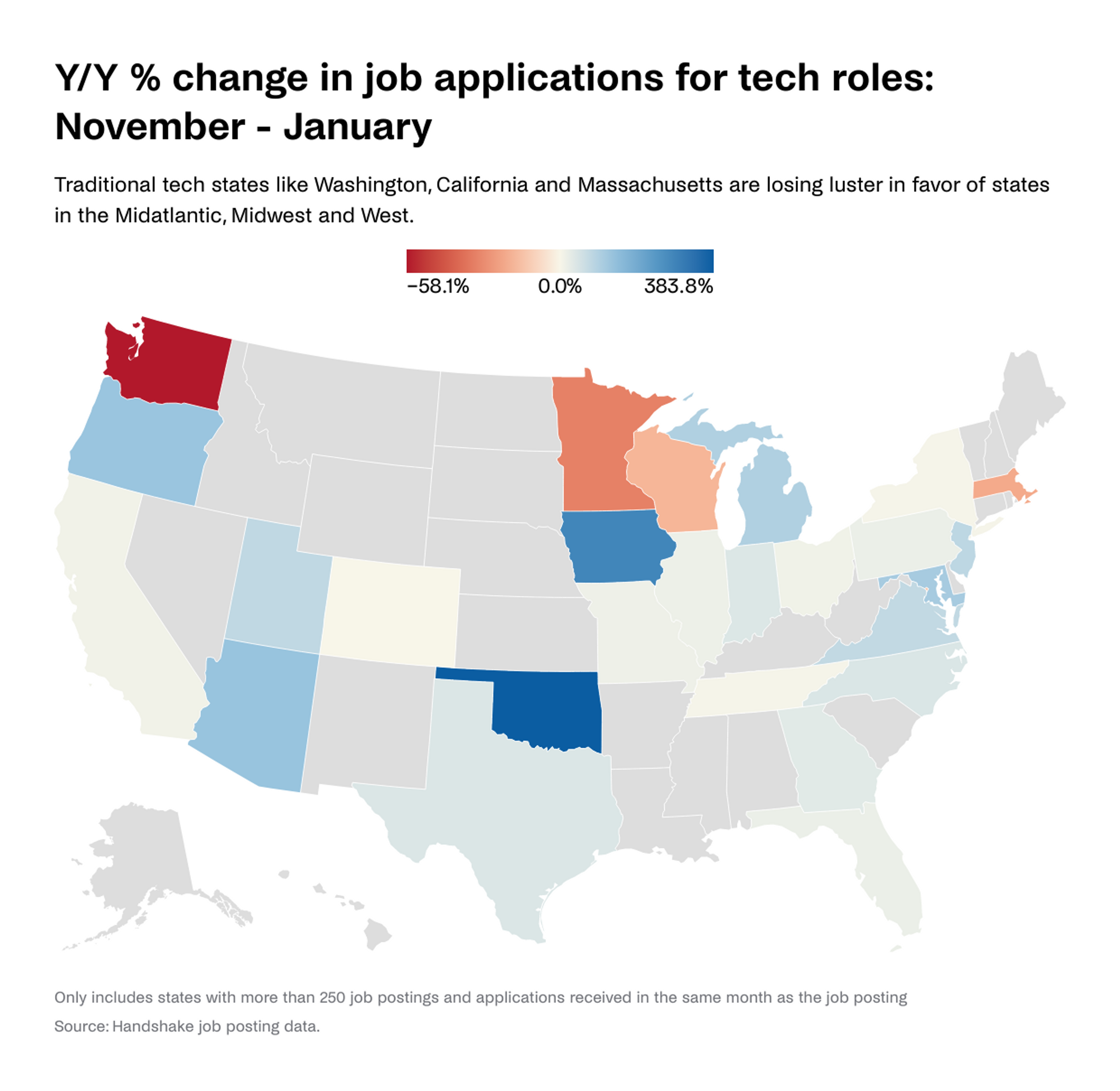Key takeaways
- Tech hubs no longer? Traditional tech hubs like California and New York are seeing fewer entry-level job openings for technical talent and less interest from students.
- A rising tech diaspora: States in other parts of the country, like Iowa (+10.9%) and Maryland (+5.1%), are emerging as locations with more job postings for technical roles—at the same time, students have demonstrated interest in applying to opportunities in those states.
- New hubs for tech talent: Students are demonstrating greater openness to a wider array of geographic locations for tech roles with large increases in applications per job in states like Oklahoma (4.8x), Arizona (2.3x), and Oregon (2.7x).
Less opportunity and interest in traditional tech hubs
In last month’s Early Talent Labor Market Update, we showcased how sectors outside of the tech industry—like clean energy, manufacturing, and government—were positioned to snap up tech talent. Just as there is a shift in the industries that are hiring tech talent, we are also seeing a geographic shift both in supply and demand for early talent.
In line with national news on layoffs and hiring freezes in the tech industry, there has been a drop off in early career opportunities for students with technical talent—especially in the states traditionally associated with the tech industry. When comparing the last three months (November 2022 to January 2023) to the same period a year before, we see there has been a large decrease in job postings for roles associated with software and computer engineering in Massachusetts (-58.7%), Washington (-56.5%), California (-51.1%) and New York (-41.5%).
At the same time, we note declining interest from students and graduates in pursuing tech roles in these regions. Our November early talent labor report highlighted how, in aggregate, applications per job were up 16% overall as a result of both more people applying for jobs, as well as each applicant applying for more jobs than in the past. That said, when we look by region we note applications per job decreased 58.09% for Washington State and 20.7% for Massachusetts in the three months between November 2022 and January 2023 when compared to the same time period a year earlier. And although applications per job for California and New York increased 9.7% and 4.1% respectively, these charges are below the average increase in applications per job—meaning overall interest is below average.

New hubs for tech talent
Even as early talent tech hiring slows in traditional hub areas, new opportunities are developing in unexpected regions: two states that have seen an increase in job postings in the last three months for technical talent are Iowa (+10.9%) and Maryland (+5.14%). Both states are exhibiting opportunities in a wide variety of industries ranging from government to manufacturing to financial services.
Not only do these states present an increase in opportunity for applicants, they also have seen a concomitant increase in interest from students for tech roles. Iowa saw a 3.8x increase in applications per job while Maryland saw a 2.1x increase from November to January when compared to the same time period a year earlier. Given the confluence of opportunity and student interest, it's possible that those two states could emerge as hubs for technical talent in the future.

Students demonstrating greater openness to a wider array of geographic locations
Although job postings are down for technical talent associated with traditional software and computer engineering roles overall, technical Gen Z talent is already demonstrating greater openness to a wider array of geographic locations. Of the states we analyzed, applications per job increased in the vast majority of states. Outside of Massachusetts and Washington, as discussed above, applications to technical roles were down in midwest states of Wisconsin (-17.6%) and Minnesota (-32.2%), as well as in Washington DC (-12.4%).
Some of the states that saw the largest increases in applications to technical positions were Oklahoma (4.8x), Arizona (2.3x), and Oregon (2.7x). Students may be foregoing large cities to live in places with a lower cost of living. Because students are more open to other geographic locations, there is a clear opportunity for employers in these states to attract technical talent.

